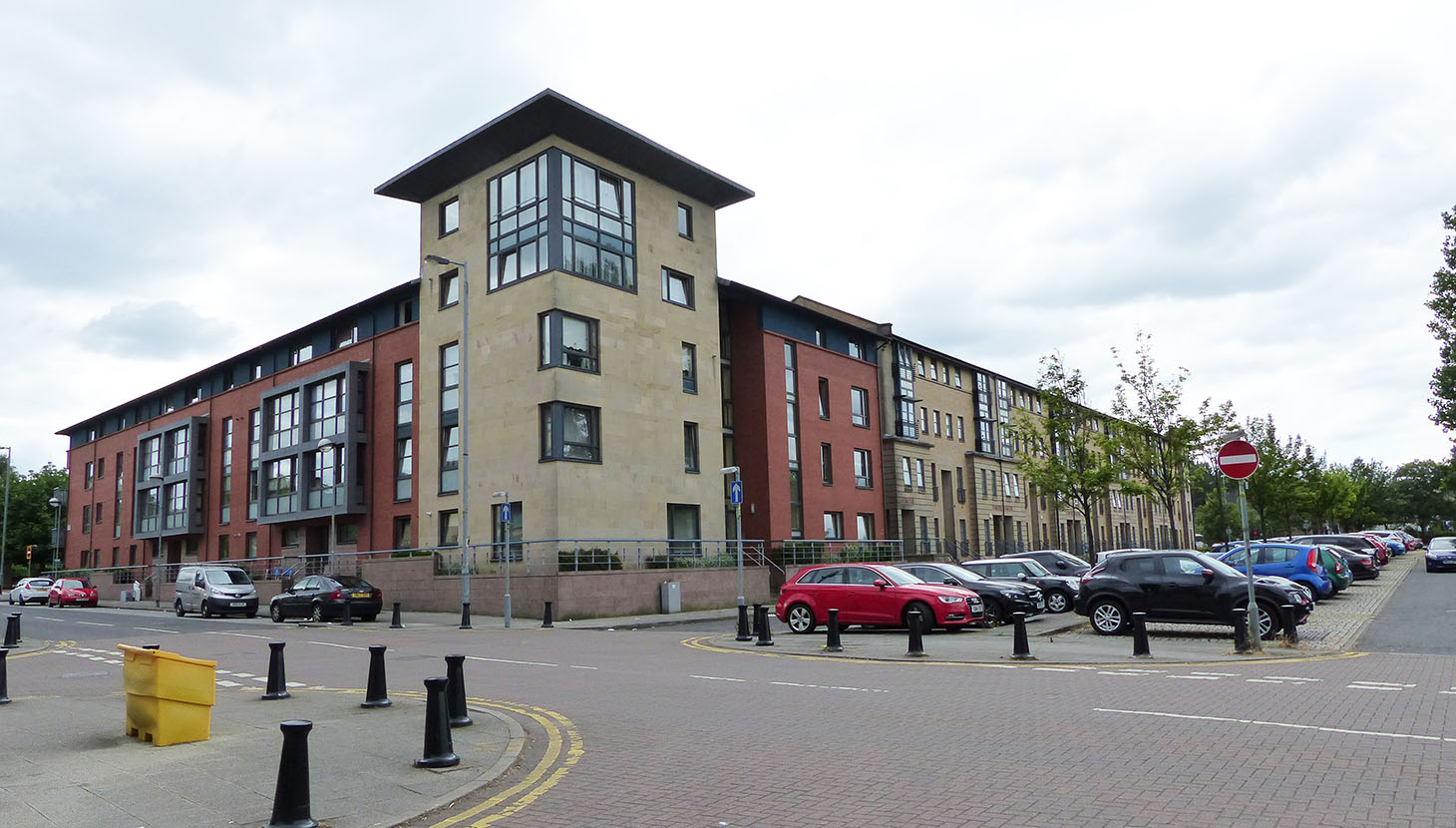
Gorbals, Glasgow
Drawing from his experience at the forefront of place-leadership, he was after all at the helm of the Glasgow Development Agency, Stuart Gulliver sets out four principles that underpin leadership success.
Leadership fascinates our society big-time. And although we have been writing, talking and arguing about leadership for at least 2,000 years it still continues to captivate and intrigue us. In place-leadership particularly we are interested in questions such as: what is the difference between place-management and leadership? Isn’t place-leadership these days simply about managing a strategic dialogue with the public? Is there, then, no role for ‘leaders’ in place-leadership? And if there is, what is it? What do we expect from our place-leaders and how do we know if they are any good? Such questions are vitally important today because, by common consent, poor and inadequate place-leadership lie at the root of the derisory performance of many towns, cities and communities.
By place-leadership I mean leadership as it might apply to differing scales of place, from town and city (at macro level) to district and neighbourhood (at meso level) and to individual development sites whether residential, destination or mixed (at micro level). I refer to them all as ‘Development Projects’ and all will require similar place-leadership skills and behaviours.
The four underpinning principles I identify are, of course, not the whole leadership story – how could they possibly be? Leadership, after all, is an enormous and controversial subject. What they are in this instance, however, are the four things that I wish I had known more about when I first started to try and become a good place-leader all those years ago. So, first up is:
No 1. The quality of the people you choose to be in the development team. Probably the single most important factor affecting place-performance, that is within your control.
To extravagantly misquote the famous quote attributable to President Clinton, “It’s people, stupid”. Good people are, without doubt, the necessary condition to achieve outstanding placemaking.
So many of the factors affecting place-performance are actually outside your immediate control, but this one is not; and if experience teaches us anything it is that – terrific people and terrific teams really do achieve terrific things. In fact I would go so far as to propose that selecting your development team is the most important job a leader does. If you were a football manager or orchestra leader, it would not even be worth discussing. It would be self-evident that you would only be as good as your team/orchestra – and so it is true of the development team.
And yet in Britain, the culturally-dominant view appears to be that the successful delivery of a Development Project will be largely shaped by such things as organisational structure, governance arrangements, strong powers and, of course, the scale of monies made available. Rarely a mention of the quality of the development team or leadership. There is no denying these elements are important to project success but I’m willing to bet that a particular situation combining good organisational structures, governance arrangements and good supporting powers but alongside a poor development team would lead to substantially worse outcomes than a situation less well-endowed with organisational structures, powers and money but with a terrific development team. In my opinion the quality of the team would more than compensate for the structural and financial endowment. The good quality team would overcome the restraints.
It is a fact that the literature on place-performance rarely mentions the importance of leadership as a success factor. Perhaps this should not come as a surprise since most of what we call the ‘literature’ has been written by academics and civil servants in government departments. Both groups often well-removed from the operational front line. It would appear that flesh and blood are rather difficult to fit into some of their preferred performance models. The real world is, however, much messier. Academics and government policymakers, with few exceptions, appear to think that once they have so clearly illuminated the road ahead, then mere journeymen are able to operate their well thought-through instructions and procedures – and then, hey presto!
No 2. In a leadership role you must be obsessive about delivery – and even go so far as to aim to install a ‘delivery culture’ within the organisation.
Whether you like it or not you will be judged primarily by your ability to ‘make things happen’ – not ‘letting it happen’ or even ‘helping things happen’. It is ‘making things happen’ that lies right at the heart of successful leadership and so a good understanding and appreciation of the art and science of delivery needs to be a key competence of place-leadership.
Bringing what we might call a ‘delivery culture’ to an organisation is a really difficult task since the notion of a ‘culture’ suggests it is more than a combination of management control systems and the processes of project management and performance monitoring – as useful as they are. However, project management and similar processes merely inform the project – they don’t drive the delivery culture itself. That has more to do with team members taking responsibility for their actions and being responsible for their own performance. How often do you hear project leaders say, “If everybody cared as much as I do we’d be OK” – but the fact is they don’t and they won’t. Good team members perform well without supervision. It is the commitment to the project, the team and the leader that drive the delivery culture. I suspect that a good, strong ‘delivery culture’ acts as the binding-agent of successful place-leadership. As a development professional in a major English city once said to me about their project leader: “He makes us feel good about ourselves and proud of our city”. Says it all.
Forward plans are frequently long on ‘what’ needs to happen and extremely short on ‘how’ we’re going to make it happen. For example, city economic strategies in this country appear to target almost exactly the same set of supply-side interventions aimed at raising skill levels, productivity, innovation, new firm formation and connectivity etc. but, in the main, saying very little meaningful or useful about how it will be delivered. Our development world is stuffed full of strategies and policies, all being ‘refreshed’ every year, but with so little on the detail as to how it will actually be made to happen. We now need much more thought to be given to issues of delivery and operationalisation. Less emphasis on new strategies, but rather clear new insights on implementation.

Gorbals, Glasgow
No 3. As a leader you will need to care passionately about your Development Project – and that passion has to be, by inspection, real, self-evident and sustained.
This is not about you – it’s about the Project. Let’s face it, this is your baby and if you are not going to be enthusiastic and passionate about your Development Project then who on earth will be? Your team, your partners and investors will all be looking to be motivated by your unashamed enthusiasm and strength of commitment. This strength of feeling can only really come from you. I suspect that if you cannot become a passionate, energetic and enthusiastic leader for your project then it is highly likely that you are in the wrong job. This, of course, is not a crime by any means. It does sometimes happen. However it probably does mean that you should usefully pursue other career opportunities with some degree of urgency.
Perhaps it is possible you could ‘go through the motions’, as it were, on team selection or even being ‘obsessive about delivery’, but you can’t bluff this one. You can’t bluff passion and enthusiasm for very long. It needs to be authentic and highly visible most of the time.
This passion and enthusiasm will help to underpin and sustain the courage you will need to fight for the life of your project when it comes under attack, as it surely will, particularly if it’s doing well. As one of my chairmen said to me: “Never underestimate how many people will want you to fail”. At the time this came as a bit of a shock, but, as time moved on, I clearly began to identify organisational life-threatening situations emerging from a variety of sources, particularly politicians and civil servants.
The best example of courage and determination to fight to defend their Project that I have ever seen at first hand was by George Mathewson – who was at the time chief executive of the Scottish Development Agency (SDA). In the mid 1980s Margaret Thatcher was in full-flight abolishing the Greater London Council (GLC) and the six other Metropolitan County Councils in England when eventually the SDA, where I was a director at the time, came to the top of her in-tray and an advance army from Whitehall and the Treasury was dispatched to Glasgow to, as we anticipated, “do a GLC in Caledonia”. Now in my previous public sector life in England, the protocol for such an important visit from HQ would be, speaking metaphorically, to “stand by your beds, take your hands out of your pockets, keep still and only speak when you’re spoken to”. Mathewson completely reversed this supine behaviour and took the decision to take control of the agenda for their several weeks’ visit. He began each day with scrupulously researched and prepared breakfast briefings, which they hadn’t asked for, where he explained what the SDA did for a living and how successful it was operating, as it did, in such bleak economic circumstances. He had assumed, as it turned out correctly, that Whitehall didn’t really understand what a national economic development agency was or what it did. He organised ‘compulsory’ field trips for Whitehall people to see at first hand the wide range of projects the agency was undertaking. The whole operation was a bold move which helped galvanise the whole of Mathewson’s team to the cause – and importantly, almost certainly, saved the SDA.

Kreuzberg, Berlin ph. Chris H
No 4. Go and visit and study similar Development Projects to your own both in Britain and abroad on a regular and planned basis. This is not a ‘jolly’ – it’s an intrinsic part of the leadership job and should not be delegated.
This ‘Visit-Inspect-Interview’ approach is a serious part of your role and if planned properly, will be your single best source of innovation, entrepreneurship and know-how – and at the very least you will get to see what the competition is up to.
From my own experience this part of the job can only be done properly at first hand. Sending other people to do this job is, in the main, almost a waste of time. Other people will not see and hear what you will see and hear. The messages will be different. Seeing and talking with project leaders of similar projects is a core part of the leader’s role. So many of my best development ideas have been adaptations of/stolen from other people’s projects picked up on such visits – especially in Germany, which probably still remains the powerhouse of innovation, expertise and ambition in urban development in Europe. I wonder why that is?
In the mid ‘80s I was starting to consider what the next model for neighbourhood regeneration might be, following the SDA’s extensive involvement in the Glasgow Eastern Area Renewal (GEAR) Project. I found the ‘bones’ of that next model quite by chance as part of the Berlin IBA (Internationale Bauausstellung – International Building Exhibition) which I visited for four days in 1987. There I was privileged to meet Hardt-Walterr Hamer, the director of the city renewal part of the IBA which centred on Kreuzberg, a tough central district which had received substantial numbers of Turkish immigrants. Hamer was a hugely impressive man who had developed a particular approach to inner-city regeneration in Berlin which he called simply ‘Careful Urban Renewal’. Hamer was a passionate urban leader and published his ‘12 Principles of Careful Urban Renewal’ – the rationale which was to lie behind the redevelopment of Kreuzberg – on the front page of a Berlin national newspaper and paid for it himself. That’s transparency and committed leadership. I cherry picked what I considered to be transferrable elements of the Kreuzberg approach and they formed the basis of the Crown Street Project which we developed in the Gorbals in Glasgow. The clear lesson here: no Berlin IBA visit – no Crown Street!
The Urban Hero and Place-Leadership
There is a view in some quarters that we are all place-leaders now; that, in some sense, a kind of distributed-leadership should be the goal for place-development in the future. In this context place-leadership in the public sector becomes just the latest form of public governance. I am not convinced that this should be the future direction of travel – or even that this approach is entirely capable of creating outstanding new places. I think we will still need urban heroes and heroic teams to deliver brilliant places that people want to live in, work in and visit.
Stuart Gulliver was chief executive of the Glasgow Development Agency for over 10 years, is emeritus professor at the University of Glasgow, an elected fellow of the Royal Society of Edinburgh and has acted as strategic economic adviser to most major British cities.
This article was inspired by his talk to members of Grosvenor‘s Leadership Team as part of their visit in 2016 to Glasgow under the Leadership in Place visit series.